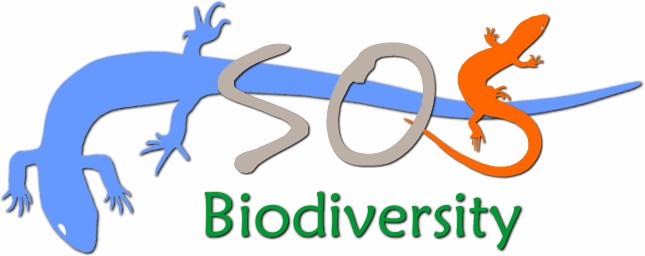|
|||||||||||||
Biodiversity What is “Biodiversity” and Why is it Important? The word biodiversity is short for the term "biological diversity". Simply put, biodiversity is the variety of life. It can refer to how varied the individuals in one species are, their genetic diversity. It can refer to the variety of species of plants and animals that live in a particular region or ecosystem. It can even refer to the number of different landscapes and ecosystems in a large geographical area. Genetic Diversity and Prairie Skinks One particular species of plant or animal can have a lot of variation among the individuals that make up all its populations. Take people for instance. We all know there are tall people, short people, some with black hair, some blond or red-headed, and our skin colours come in many shades. There is a lot of biodiversity in the genes that make up the human species. Evolution works by favouring individuals in a population that are better suited to their environment. When environments change the more genetic diversity there is in any one species, the more raw material evolution has to work with, the better that species' chances of adapting and surviving as a species. There is probably still lots of diversity in the genes found within Manitoba's prairie skinks. Within their known range of occurrence skinks tend to be spread out in localized populations wherever the habitat is best. The more different populations of skinks that can be preserved in Manitoba the more of the species' genetic diversity we can preserve, and the better off the skinks will be in the future as they adapt to a changing planet. Species Richness
Diversity of Ecosystems Some regions may have a great diversity of ecosystems by virtue of the variety of landscapes or geographical types within. A region full of lakes, rivers, hills, valleys, uplands and marshes, prairies and forest will have more biodiversity than a region containing only one type of ecosystem, such as a vast stretch of prairie. Areas with a rich array of different ecosystems can be real biodiversity hot-spots as each ecosystem will have its own inherent species and genetic richness, too.
|
|||||||||||||
Biodiversity Issues in Manitoba For a great primer on biodiversity issues in Manitoba download this PDF file: Manitoba Biodiversity Perspectives (2 Mb) or go to Keewatin Publications' website for more Biodiversity Perspectives. Biodiversity of Reptiles in Manitoba
|
|||||||||||||
Biodiversity on a Personal Level There's another way to look at biodiversity, and another viewpoint to consider biodiversity from: your heart. Biodiversity is about walking through fields or woods with birds singing, butterflies and dragonflies flitting around, grasses and wildflowers waving in the breeze, deer and elk grazing in the distance and eagles soaring overhead. Biodiversity is about the quality of life, literally, that surrounds us and the natural legacy that we will leave for our children. We can treasure and protect what remains of our natural world, it's beauty and its biodiversity, or we can let it slip away. The choice is ours.
The generation of people living in Manitoba right now, you and me, know the score. We know the planet is a finite place. We know we have already taken over most of the land on the planet for our own purposes. And we know that if we don't make a deliberate effort to protect what's left of the natural areas on our planet, that they may soon disappear. Manitobans can't do much to protect the Amazon rain forests, the Serengeti Plains or the Great Barrier Reef, but we can protect our Carberry Sandhills and the other parts of this province that are rich in biodiversity. The question is, will we? Will we make the effort and perhaps even the sacrifices necessary to ensure that our grandchildren can still hike through undisturbed prairies and see a prairie skink scoot across a trail? Time is running short for the prairie skink and the mixed-grass prairies it depends on. Doing nothing is not an option. |
|||||||||||||
|
|
||||||||||||

